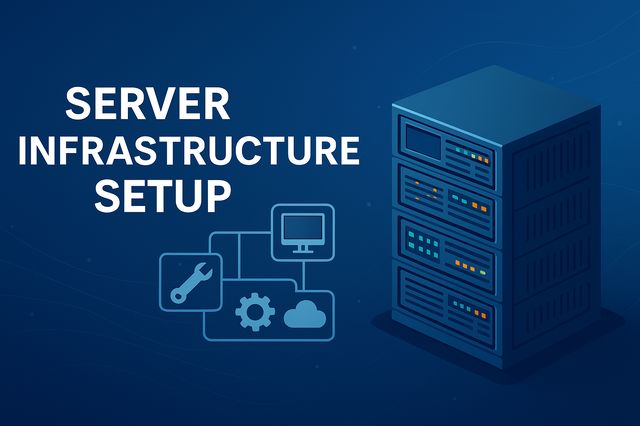Planning an office IT relocation requires more than moving equipment it’s about rebuilding secure, stable infrastructure.
SMBs must audit their current IT setup, preconfigure connectivity in the new site, label and back up every system, and validate performance post-move.
A structured, step-by-step plan from cabling and power readiness to testing and optimization ensures minimal downtime and full business continuity.
Strategic Planning and Infrastructure Assessment
The most important step in any office move is planning, and in the IT domain this is especially true. Before dismantling a single workstation, SMB leaders must map their current and future infrastructure requirements. This process begins with a full audit of the existing IT environment: servers, switches, firewalls, wireless access points, phone systems, and user endpoints. The audit should include a topology diagram showing how devices connect to the central communication rack and how data flows through the organization.
Once the audit is complete, the new office space must be surveyed. A floor plan is essential, marking every workstation, conference room, and server or network rack. At this stage, business owners should work with a managed service provider or IT integrator to design structured cabling layouts, ensure there are enough electrical circuits, and verify that internet service providers can deliver sufficient bandwidth to the new location.
This planning phase should also include risk assessments. For example, consider whether there is sufficient cooling for servers, whether redundant internet connections are needed, and how cloud-based workloads may reduce dependency on physical infrastructure. Creating a Gantt chart or project plan with milestones for cabling, equipment installation, and testing helps avoid costly surprises.
Why this step matters is straightforward without a plan, SMBs risk extended downtime, misconfigured networks, or worse, a complete halt of business operations during the transition.

Preparing Connectivity and Communication Lines
With the blueprint in hand, the next step is preparing the connectivity backbone. This includes provisioning and testing internet circuits at the new location well before the move date. SMBs cannot afford to wait until the relocation day to discover that fiber is not installed or that DSL speeds are insufficient. Coordination with the ISP should occur weeks in advance, including scheduling the transfer of static IP addresses, phone numbers, or SIP trunks.
Inside the new office, the communication cabinet or rack must be prepared with structured cabling, patch panels, and labeled connections. Every workstation should have at least two data drops to accommodate future expansion. Power outlets should be tested, and in areas hosting servers or network appliances, uninterruptible power supplies (UPS) must be installed.
A common oversight is failing to check cross-connects between the service provider’s demarcation point and the office’s communication rack. Technicians should verify signal integrity from the ISP handoff all the way to the switch ports. Wireless access point locations should be planned using site surveys to prevent dead zones.
By securing connectivity in advance, companies can relocate workstations and servers knowing that once they plug in, the network will be available. This avoids a situation where employees arrive at the new site and are unable to access email, cloud applications, or VoIP phones.
Dismantling and Labeling the Old Environment
When the new office infrastructure is ready, it is time to dismantle the old environment. This process must be meticulous. Every device from servers to monitors should be labeled according to the new floor plan. Cables should be coiled, tagged, and packed systematically. Removing network gear from the communication rack requires care: switches, firewalls, and patch panels must be powered down gracefully to prevent data corruption or hardware damage.
Workstations should be disconnected in sequence, ideally leaving business-critical users online until the very last moment. A useful method is to place each workstation’s equipment on its assigned office chair, wrap it with stretch film, and mark it with the corresponding workstation number. This ensures that when it arrives at the new location, it can be unpacked directly at the correct desk without confusion.
During dismantling, configuration backups of all network devices should be created and stored securely. This provides an immediate fallback if something goes wrong during reinstallation. Similarly, confirm that all cloud services are operational and that remote access methods are available so employees can continue working if there are unexpected delays in the relocation.
For SMBs, labeling and organized packing can mean the difference between being operational within hours or facing days of lost productivity.
Installation at the New Office
On relocation day, the priority is to establish the communication rack first. The rack should be installed in a secure, cooled location with proper grounding. Switches, firewalls, and routers are mounted and patched into the pre-installed structured cabling. Once the backbone is up, servers and storage systems are reconnected, powered, and validated. Test each device for correct IP addressing, VLAN configurations, and routing policies.
Workstations can then be distributed to their respective desks using the labeling system prepared earlier. Printers, VoIP phones, and conference room AV systems are connected and verified. Wireless access points are mounted and tested for coverage and throughput. Internet access is checked across multiple endpoints to confirm that DNS resolution, VPN connectivity, and cloud services are fully functional.
The order of operations matters greatly. Network services must be online before end-user devices are powered up. MSP engineers should coordinate with telecom providers to port phone numbers and verify call routing. Once all endpoints are live, a brief training session or communication to employees can help them adjust quickly to the new environment.
Without systematic installation, SMBs risk chaotic cabling, misconnected endpoints, and wasted hours troubleshooting avoidable issues.

Validation, Testing, and Optimization
After installation, a rigorous validation process ensures that the environment is production-ready. This includes testing failover links, verifying backup systems, and confirming that internet speed meets contracted levels. Each workstation should be checked for connectivity to shared drives, printers, and critical applications.
A structured acceptance checklist should cover server uptime, firewall rules, wireless performance, VoIP call quality, VPN functionality, and endpoint security tools. Where possible, automated monitoring agents should be installed immediately to provide visibility into system health.
It is also important to document the new environment. Update network diagrams, asset inventories, and disaster recovery procedures to reflect the new setup. Share these with key stakeholders and keep copies both on-site and in cloud-based repositories.
Finally, gather employee feedback during the first week of operations. Issues such as patchy Wi-Fi, slow printers, or inaccessible file shares should be resolved quickly before they hinder productivity. Continuous monitoring ensures that the environment remains stable and secure long after the move.
For SMBs, this step closes the loop. A move is not complete until every employee can work without disruption, every system is monitored, and every risk is mitigated.

Begin with a complete IT audit. Document all servers, switches, firewalls, and endpoints, then design a network and cabling plan for the new site before moving anything.
Testing connectivity and power in advance ensures that when equipment arrives, systems can come online immediately avoiding downtime and lost productivity.
Label every device and cable according to the new office layout. Backup all configurations and store them securely to ensure fast restoration and minimal confusion.
Verify internet speed, firewall policies, VLANs, VPNs, Wi-Fi coverage, and VoIP call quality. Ensure monitoring tools and backups are active before the go-live date.
Use phased dismantling, pretested infrastructure, and detailed project management. Keep core business services online until the final transition is complete.
Accurate diagrams and inventories support troubleshooting, compliance, and scalability. They also ensure faster recovery in case of future incidents or expansions.
References
IT Office Relocation Checklist | Ripple IT – rippleit
7 Critical Tips for a Smooth Office Relocation – visipoint
IT Office Relocation: Professional Tips For Moving Successfully – invgate


